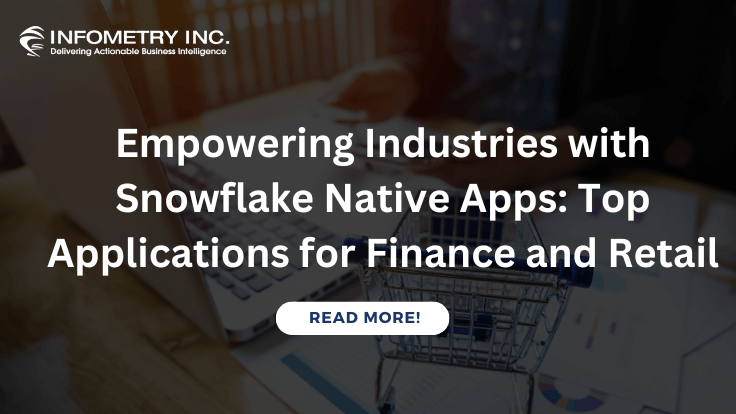
Top Performance Tips to Create Quality Power BI Custom Visuals
November 29, 2022
Top 7 Cloud Migration Tools for 2023
December 19, 2022Application Programming Interface(APIs) are frequently alluded to as the glue of the advanced world. To give some examples, they enable more integrated digital experiences, energizing the ascent of everything connected, from finance to health. They also address a critical change in organizations’ business models: eBay produces 60% of its income from APIs.
However, the ascent of APIs is also bringing expanded IT complexity. Different business units adopt APIs to develop income or art better user experiences. They each build their APIs with other innovations, and soon APIs are proliferating independently in various offices or districts inside large enterprises.
Decision-makers let us know the developing intricacy is causing extreme pain points connected with efficiency, adaptability, and security. It delays the launch of new digital activities and contributions, adversely influencing the primary concern.
Often, valid justifications organizations end up with this kind of API complexity: gathering different security needs, moving to the cloud, or making their frameworks and organizations more robust and agile.
Here is a List of Ways We Have Taken While Enterprises Manage Complex APIs
Design Thinking First – then the APIs
Most organizations feel free to develop their APIs to fundamental necessities. In a design thinking exercise, the thinkers should be assembled – an assortment of essential partners, including unit leaders, technical experts, and end users, to team up on the design, mockup, execution and documentation of the API and its companions. The thought here is to ensure that the technical build of the API does not place any imperatives on your clients and ensures it addresses the clients’ all are issues while also associating basic information from different sources in a reliable and scalable way.
You get API and UX designs before clients and partners frequently to ensure no significant design flaws;
Any limitations of IT or absence of capacity should not be a showstopper and should be considered for outsourcing or external expertise.
So how do we “Design Think”?
We follow some fundamental principles, as documented below:
File and Organize:
Like any critical design or broad file exercise, it’s crucial to design your APIs and their program cordially and cleanly. Little things, for example, making naming shows, running API spell checks, and utilizing standard spelling, words or phrases, make it simple to master where your APIs are and where they fit into the master plan.
Make them Valuable and Easy to Understand:
Whether your APIs will be utilized internally or externally, you need to ensure that they can be accessed and used by somebody who doesn’t understand or did not build it. Essentially, any API should have the option to be utilized by anybody. From any framework they are approaching, whether that be a NoSQL, Database, or a hyper scaler case, for example, AWS S3 bucket or an Azure service.
Make it Thorough – but not too Exhaustive:
An overcomplicated API or half-cooked Application Programming Interface is useless to anybody. While designing your Application Programming Interface or more extensive network, you need to thoroughly consider the many details of the user that could be allowed without making the guidance for implementation too challenging.
Build it for the Future:
Sure, digital is changing quickly. But there isn’t anything more terrible than building an API that talks to a legacy application and interfaces in a legacy way or addresses the conventional back-end versus the quickly developing outer touchpoint or front end. To guarantee your Application Programming Interface is as future-proofed as possible, we suggest handling client code first or the closest point to the edge layer – for example, cloud computing.
Collaborate & Communicate:
From the first inception until the last implementation, design thinking is tied to conveying and working with clients and specialists in your project team. We suggest storing your beginning phase representations, studios and designs in a central file repository vault so you can monitor developments and backtrack if you want to.
Cover the Basics:
Before actual coding starts, it is fundamental to remember that APIs can get complex rapidly. In your beginning phase of planning, we suggest ensuring that the design team are across the accompanying:
- Application Programming Interface structure and external accessibility.
- Application Programming Interface connections, including internal and outer accessibility.
- URL schemes and naming shows.
- Process flows (when ‘x’ occurs here, then, at that point ‘, y’ occurs there).
The magnificence of design thinking is that toward the start, each idea is worth considering; therefore, some truly effective solutions are permitted to arise. Moreover, design thinking can frequently decrease intricacy or the impression of ‘it’s rigid by ensuring that the cooperative focuses on simplicity and robust design.
Wrapping Up
Working with APIs can be scary for some because of communicating with code they don’t straightforwardly control. This frequently implies a designer’s more conventional troubleshooting strategies are unrealistic. But, with experience, you’ll know what to search for while experiencing different API errors, permitting you to fix them more quickly. With these errors settled, you’ll control your application with APIs and external data and improve user experience.




